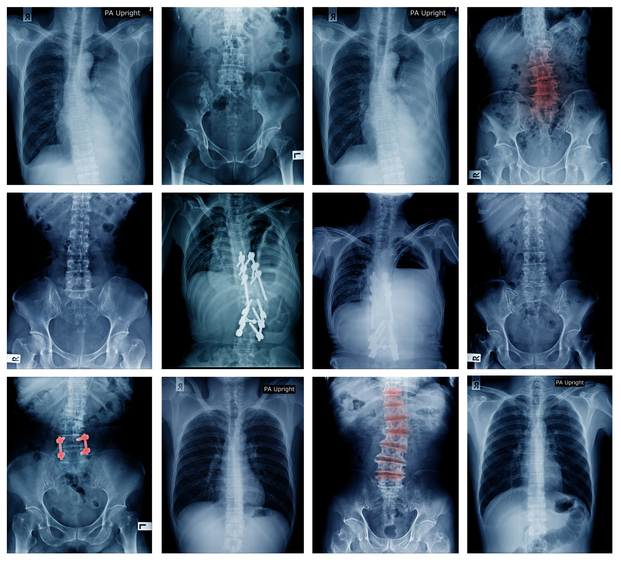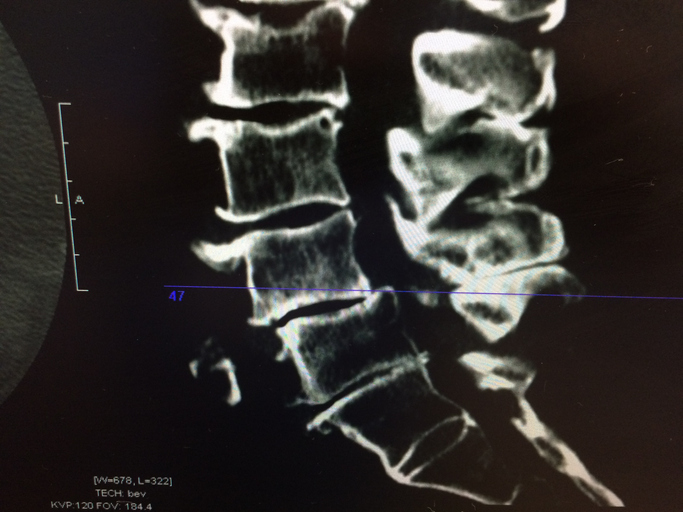Pain
What Is Spinal Stenosis?

Spinal stenosis is a narrowing of the spinal canal. It occurs when the bony openings within the spine (foramina) begin to narrow, placing pressure on the nerves traveling throughout the spine. This reduced nerve space can occur within the spinal cord or where the spinal nerves exit the spinal canal.
The spine (backbone) runs from the neck to the lower back. The bones of the spine (vertebrae) form the spinal canal, which houses the spinal cord and nerves. If a spinal nerve or the spinal cord becomes compressed, pain, numbness, muscle weakness, or tingling may occur. Spinal stenosis most often occurs in the lower back (lumbar stenosis) or neck (cervical stenosis). Spinal stenosis of the upper/middle back (thoracic stenosis) is rare.
Symptoms
Symptoms of spinal stenosis vary depending on the location and the nerves affected. Some people with spinal stenosis don’t experience any symptoms; however, symptoms typically begin gradually and worsen over time.
Cervical stenosis symptoms
Symptoms of spinal stenosis in the neck (cervical stenosis) include the following:
- Neck pain
- Walking or balance issues
- Hand, arm, foot or leg weakness
- Tingling or numbness in a hand, arm, foot or leg
- Urinary urgency or bowel dysfunction (severe cases)
Lumbar stenosis symptoms
Symptoms of spinal stenosis in the lower back (lumbar stenosis) include the following:
- Back pain
- Pain or cramping in one or both legs, especially when standing or walking for long periods which eases when bending the body forward or sitting down
- Foot or leg weakness
- Tingling or numbness in a foot or leg
Thoracic stenosis symptoms
Symptoms of spinal stenosis of the upper/middle back (thoracic stenosis) are not well known as the condition is rare.
Causes
While some people are born with a small spinal canal, spinal stenosis most often occurs after the age of 50 due to narrowing of the spinal canal. Causes of spinal stenosis include the following:
- Spinal osteoarthritis
Spinal osteoarthritis can cause bone spurs to grow into the spinal canal, placing pressure on the nerves. Inflammation caused by spinal osteoarthritis can also contribute to narrowing of space within the spine. - Herniated discs
Spinal discs, which act as shock absorbers between the vertebrae, often dry and crack with age, allowing the soft inner material to escape and put pressure on the spinal cord or nerves. - Degenerative disc disease
Degenerative disc disease occurs when spinal discs lose hydration and begin to flatten. This can cause the disc to push into the spinal canal and place pressure on the facet joints. - Thickened ligaments
Ligaments, which help hold the bones of the spine together, may become thick over time and bulge into the spinal canal. - Spinal injuries
Spinal injuries can occur for various reasons, such as car accidents or trauma to the spine. If a spinal injury involves fractured or dislocated vertebrae, displaced bone can cause damage to the contents of the spinal canal. Also, back surgery can cause acute inflammation in nearby tissues, which places pressure on the spinal cord or nerves. - Tumors or cysts
Although uncommon, tumors or cysts can form inside the spinal canal between the spinal cord and vertebrae or within the membranes that cover the spinal cord.
Risk factors
- Over the age of 50
- A genetic disease affecting bone and muscle development
- Congenital spinal deformity, such as scoliosis
- Trauma to the area


















